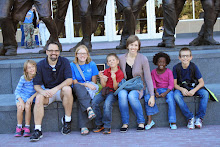a few China facts
We at ELIC had a nation wide quiz and these are the answers. We thought they were interesting and thought you might enjoy 10 quick China facts.
1. The gold star on the flag reprsents the Chinese Communist Party. The other 4 stars represent 4 categories of people referred to by Chairman Mao in one of his essays: workers, peasants, petty bourgeoisie, and bourgeoisie. The stars are yellow to imply that New China belongs to the Chinese people, a "yellow race." Red is a traditional color of happiness in China, and is also associated with the Revolution. The flag design was adopted by the soon-to-be new government on September 27, 1949, and unfurled and hoisted at Tiananmen for the first time on October 1, 1949.
2. The name of Beijing in the years just prior to 1949 was Peiping. Here's the story. The two characters for the name of the city (Bei jing) mean "northern" and "capital." The current standard pronunciation of these two characters is Beijing. Many of us are aware that the city used to be called Peking. But Peking in Chinese is not a different name for the city, just a different pronunciation of the two characters. It is the Cantonese pronunciation of the characters, and it is that pronunciation that made it's way into English. In the 1970's the government decided that the official Romanization (English letters) should be Beijing instead of Peking. That's when we English speakers made the switch. Ok, so where does Peiping come from? When the Nationalists were in charge, the capital was moved to the city of Nanjing (which means Southern Capital). At that time, since Beijing was no longer the capital, the name was changed to Peiping (southern pronunciation of "northern peace"). It was only when the Communist Party came to power, and moved the capital back up here that the name reverted back to Peking. Prior to 49, it was Peiping.
3. In Mao's first review of Red Army troops in Beijing he rode in a US Army jeep that had been captured from the Nationalist Forces.
4. The name of the famous Canadian doctor who cared for Red Army soldiers was Norman Bethune. Perhaps you Canadians have been bombarded with questions about him from your students. He's considered a hero.
5. Shenzhou is another name for China. It's a poetic name, meaning "divine land." Hanguo is the Chinese name for South Korea.
6. Following their defeat by the Communists, the Nationalists fled to the island of Taiwan. (Everyone got that right!!!)7. The American official who made a secret visit to China in 1971 was Henry Kissinger, who was President Nixon's National Security Advisor. At that time, the US and China had no formal diplomatic ties, and had, in fact, never even "talked." The following year, Nixon made his historic visit to China.
8. OK, this was the slightly tricky question. Information Technology was not one of the original Four Modernizations. Technology was, but at that time IT was not yet a developed field.
9. Deng Xiao-ping was the first Chinese leader to visit the United States.
10. Chairman Mao once worked as a librarian at Beijing University.


<< Home